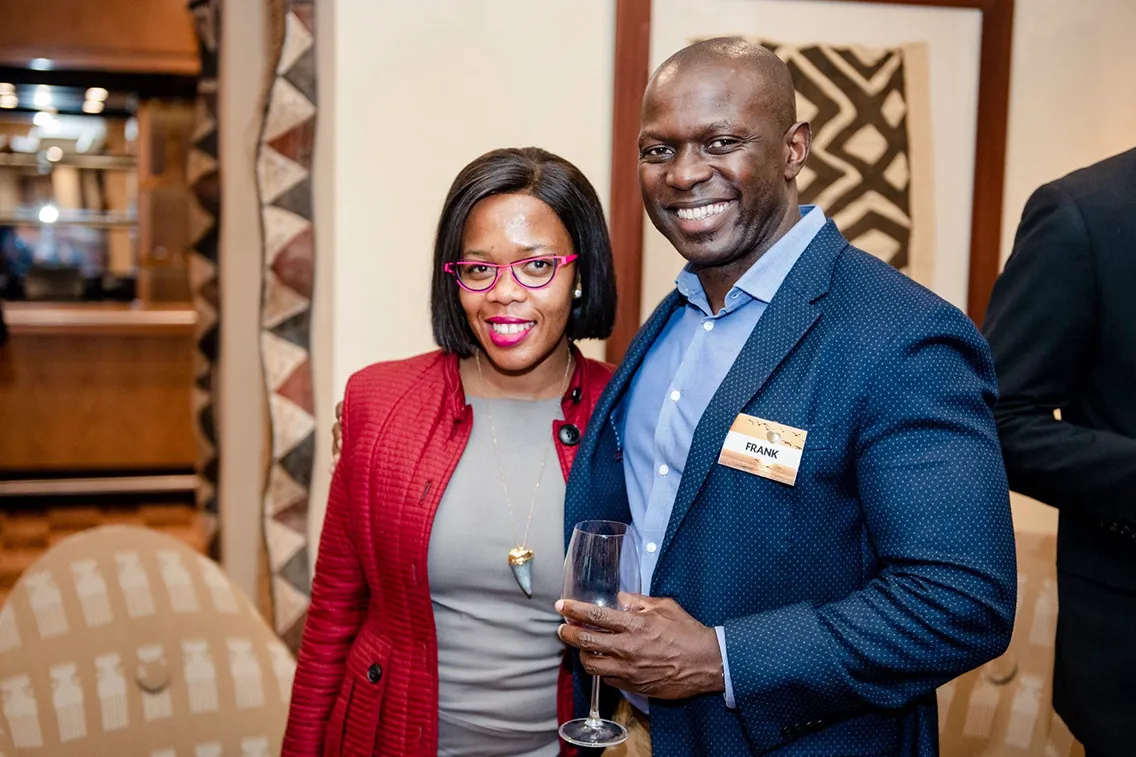
Dr Frank Aswani, CEO of the African Venture Philanthropy Alliance (AVPA), is betting that by supporting sustainable projects that deliver social impact, a blend of venture capital, private equity and philanthropic dollars can make a much bigger impact on the continent than any of them can on their own.
Despite receiving billions in aid and philanthropy annually, Africa is still behind in various development indicators and is on course to achieve only two (partnerships and climate) of the 17 SDGs by 2030. Aswani’s view is that private capital is essential to reversing this trend and is confident that investment will yield profits as well as social impact.
I’ve known Aswani for nearly a decade, from when he was managing the African Leadership Academy in Johannesburg. The academy, the brainchild of Fred Swaniker, Acha Leke and a few other co-founders, was largely funded by philanthropic capital and has been one of the continent’s great success stories in the field of education and impact.
When I meet with him on the sidelines of the UN General Assembly meetings in New York, I ask him how he defines impact investment and the state of impact investing on the continent.
“Impact investing is the kind of capital that comes into investments to seek not just social impact, but financial returns.” Private capital, he points out, is wary of social investments; this hinders the flow of funds into initiatives that address critical social needs. What AVPA is doing is bringing together a diverse network of social investors across the continuum of capital – grants, debt and equity – who range from philanthropists to aid agencies, impact investors, venture capital and private equity fund managers, corporates and governments, to collaborate and invest in various stages of social ventures. Their mission is to increase the flow of capital into African social investments and help Africa close its SDG financing gap.
Africa faces the triple challenge of declining aid, rising public debt and growing populations. “So we have less money to serve more Africans,” he describes the situation, adding as a prescription, “the only way you can close that gap is to get more money from the private sector to come into the social investments.”
Between now and 2030, Aswani points out, about $4.5trn will be needed annually to meet the SDGs worldwide, $2.5trn of that for Africa. For context, there is some $450trn available in global capital and financial markets. In essence, merely 1% of that money can fully address the challenges identified by the UN as vital to making life better for all.
So why isn’t private capital moving into impact? The main reason is the perception that social investments are risky and don’t offer good returns. “So in essence, we don’t lack capital,” he says, “what we lack is risk capital to de-risk social investments and crowd in private capital into the impact space.”
To that end, in partnership with CIFF (Children Investment Fund Foundation) and Prosper Africa, AVPA launched a $200m Catalytic Pooled Fund in NY during the UNGA week, that will pool grant capital to be used to de-risk social investments and crowd in ten times ($2bn) of domestic private capital into African social investments. In particular, the fund is targeting the $1.8trn of dormant private capital sitting in pension funds, insurance companies and dormant bank accounts.
The key to successfully mobilising this capital lies in combining the different forms of capital – grants, debt, and equity – through a variety of innovative finance instruments.
“So, for example, in the early stages of supporting businesses or innovation which are still unproven, you need grants because grants can have the appetite for risk and they can take those models from an idea to a proof of concept,” he explains. Once proven, commercial capital can come in to deliver scale and multiply the impact. “So what we do is bring all of them together and we try to put over the shared vision, and the value and additionality that they can each create by investing together at different stages of life cycles for social investments, rather than going it alone,” he adds.
Aswani believes that there is a growing appetite within the investment community for impact. “Increasingly we’re seeing more and more fund managers who are seeking to also demonstrate the social impact of their investments.”
Appetite for social good
This optimism contradicts recent evidence that the corporate world is stepping back from the heights of social activism in the wake of the ‘Black Lives Matter’ movement, when every company wanted to demonstrate their commitment to social justice. References to environmental, social, and governance (ESG) principles have been scaled back significantly in earnings calls and statements.
Aswani, however, insists that the corporate mood is starting to favour investments that also make impact, not least because in the long term, it makes sense for the bottom line. “It’s not sustainable for investors to just make money. You have to keep communities healthy because they are the ones who buy your products.”
That is one of the ways in which corporate interests align with social good, but it is by no means the only one. The BLM protests, Aswani says, show that businesses can be at risk when unrest boils over and it is in their interest to help close the income gaps.
“Again, we are now seeing that it is possible to make money while meeting the needs of people and the planet. You see more companies, for example, putting money into clean technologies. That is the kind of ethos that is emerging,” he says.
The State of the Market 2024 report from industry body, the Global Impact Investing Network, would seem to bear out this optimism. Impact investing has experienced steady growth, with assets under management (AUM) reaching $490bn, driven by a 14% compound annual growth rate (CAGR) over the past five years.
Private equity dominates the asset class, representing 43% of AUM, though equity-like debt has grown the fastest (104% CAGR). Sub-Saharan Africa remains a significant focus for emerging market investments, receiving the highest allocation (29%).
Energy, housing, and financial services lead sector investments, while the information and communication technology sector has seen the highest growth. Climate change mitigation is increasingly vital, with 69% of investors planning to boost energy sector allocations.
AVPA’s role is to connect investors to each other and to opportunities on the continent. “We have a deal share platform where we list the impact pipeline.
And these deals can only be listed by an existing investor and not the entrepreneur running the deal. That way, other investors are assured that someone else has some skin in the game,” he explains.
This approach means that the due diligence has already been done on listed deals, accelerating the process of securing additional capital for growth and scaling. Alongside the platform, AVPA also facilitates pitch sessions where investors can assess these opportunities.
AVPA also creates “communities of impact” around specific challenges. Whether it’s healthcare, climate, or country-specific initiatives, Aswani emphasises the importance of bringing together stakeholders across sectors to collaborate, co-invest and exchange ideas.
The third pillar of the company’s approach is research. Through its Research and Knowledge Hub, it not only conducts studies but also consolidates research from partners and members, creating a repository of knowledge that supports the overall impact investment ecosystem.
Adapting models to environments
On the ground, Aswani says impact investors work around the unique challenges on the continent to get investments where they are needed. Take, for example, women’s inability to access finance in some parts of Africa because they cannot own property and thus cannot have the collateral that most lenders require. This is not only unfortunate for women-led businesses but also a missed opportunity because, Aswani points out, women tend to pay their debts.
“So one of the innovative models that have been applied is a revenue share model where the borrower pays the debt based on how much money she makes. When she makes more money; she pays more. And her cash flow is not affected because she pays according to what she has. And this way, she doesn’t need collateral.”
Outcome-based financing is another innovation. “Let’s take a situation where someone wins a government contract to supply 200,000 textbooks. Because of corruption and inefficiencies in the system, sometimes they might supply the first 20,000 and the 180,000 will never be seen. With outcome-based financing, however, payment is based on only what has been delivered.”
This involves a rigorous process where an independent evaluator verifies that the books have not only been delivered but have also reached the intended recipients. “They even go to the kids’ homes to make sure the books are with those kids.”
Only after the results are confirmed does the investor receive payment – what they initially invested plus a return of 10-15%.
Education, Aswani says, is important for the success of impact investing in Africa. And yet, there is only one school in all of Africa where impact and sustainable finance training is offered. “One of the things we have to do to mobilise capital at the required speed and scale is make sure we’ve got a critical mass of impact-competent human capital on the continent,” he avers.
AVPA runs a number of impact investing training programmes including its flagship Africa Impact Investing Fellowship (AIIF). “It’s a three-month virtual programme where we bring in Africans from organisations that are deploying impact capital. It’s very popular – always over-subscribed.”
On the back of that, he says, similar programmes have been commissioned for healthcare investors –
the Africa Healthcare Funders’ Forum (AHFF), and for climate investors, the Africa Climate Investing Forum (ACIF), in partnership with the Lemelson Foundation.
“We need to tailor our education to fit our needs,” Aswani concludes.
Want to continue reading? Subscribe today.
You've read all your free articles for this month! Subscribe now to enjoy full access to our content.
Digital Monthly
£8.00 / month
Receive full unlimited access to our articles, opinions, podcasts and more.
Digital Yearly
£70.00 / year
Our best value offer - save £26 and gain access to all of our digital content for an entire year!

 Sign in with Google
Sign in with Google 



